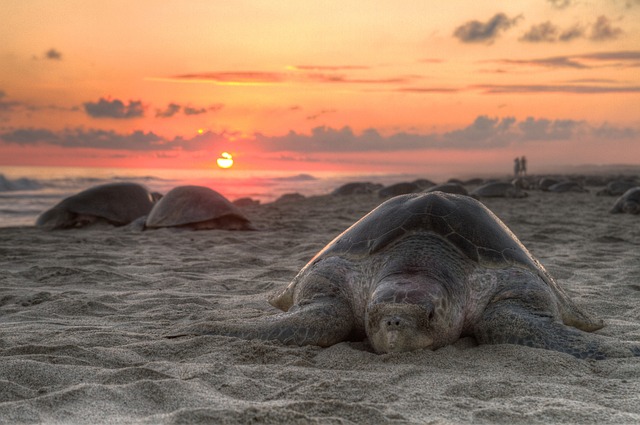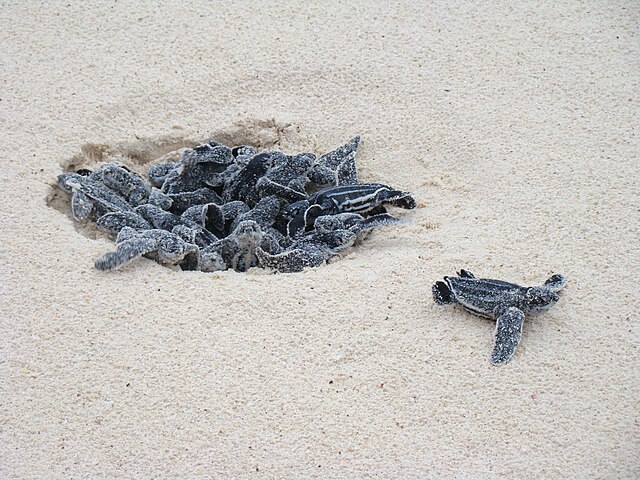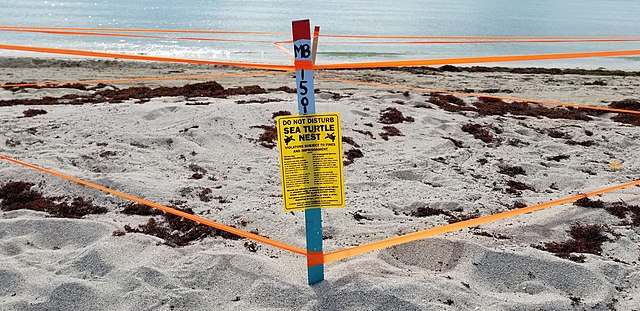 When you hear the word reptile, do you think of turtles? Probably not.
When you hear the word reptile, do you think of turtles? Probably not.
But, these shelled creatures are reptiles, which means they are related to crocodiles and alligators. Recently, our beloved sea-faring friends have seen changes to their breeding patterns and breeding territories.
But what is happening to their habitats, and what is the cause? Let’s find out!
The Turtle Lifestyle
Once turtles have begun the process of bringing baby turtles into the world, the mothers-to-be swim to nesting beaches at night while the fathers stay at sea.
Heading onto the beach above the high-tide line, the mother turtle clears the area where she wants to dig the hole for the eggs. After creating an indent in the sand to rest in and preparing the sand, the mother turtle uses her rear flippers to dig the hole and deposit her eggs. Nests can reach a depth of 2 feet, 8 inches.
 The egg-laying process induces a hypnotic state in the mother turtle, and she is practically unresponsive until all her eggs are laid. Once the process is over, she covers the hole with sand to disguise it from predators like crabs and foxes.
The egg-laying process induces a hypnotic state in the mother turtle, and she is practically unresponsive until all her eggs are laid. Once the process is over, she covers the hole with sand to disguise it from predators like crabs and foxes.
Each hole can contain approximately 110 eggs, but the number varies based on the species. After undergoing the birthing experience, the mother turtle travels back into the ocean and leaves her eggs to fend for themselves. The activity of egg-laying continues for a few months, and mother turtles can dig from two to eight nests over this period. Turtles can go on the nesting journey every year or every five years.
Climate Change and the Hatching Process
The eggs incubate for two months after being laid.
Did you know that sand temperatures during incubation determine the gender of the baby turtle? If the sand temperature is 88.8℉ or higher, the turtles will be mostly female. However, temperatures below 81.8℉ will predominantly produce males. Fluctuations within this temperature range result in a mix between the sexes.
Last year, Florida experienced some of the highest turtle birth rates on record, indicating that current conservation efforts work. Most hatchlings were female - a direct consequence of warmer sand temperatures! Climate change is causing increasingly hot weather and may continue to cause massive damage to reptile populations. Scientists worry that higher temperatures will hinder their efforts to protect sea turtles.
Why The Situation Is Still Hopeful
 Even with the setbacks of climate change and increased temperatures, scientists are confident that turtles will survive.
Even with the setbacks of climate change and increased temperatures, scientists are confident that turtles will survive.
The turtle has been around for more than 200 million years, proving that they are resourceful creatures. Turtles are exhibiting behavioral changes that could help them survive. Joel Cohen, who is part of the Sea Turtle Preservation Society, observed turtles heading to North Carolina for cooler sand, while other turtles started their breeding cycle earlier in the year.
With conservation efforts still in place, changes in breeding and travel patterns, and the natural survival of turtles kicking in, these prehistoric creatures are likely to survive and be here for a long time!
Sources: NPR, Washington Post, Discovery, Seaturtlestatus.org







